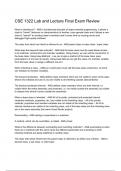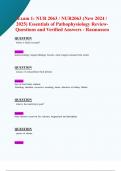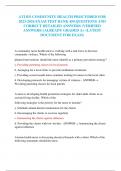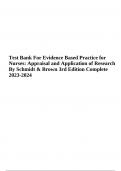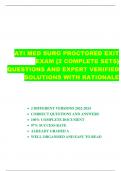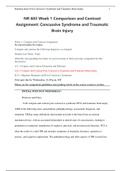Exam (elaborations)
CSE 1322 Lab and Lecture Final Exam Review Questions with 100% Actual correct answers | verified | latest update | Graded A+ | Already Passed | Complete Solution
CSE 1322 Lab and Lecture Final Exam Review Questions with 100% Actual correct answers | verified | latest update | Graded A+ | Already Passed | Complete Solution
[Show more]
